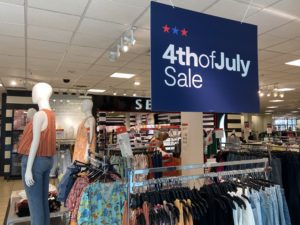The social theorist and urban planner Andres Duany a few years ago gave a talk on “male” space in the American household. Male space has pretty much disappeared; the den, once male, became a family room, and then became housebroken. Homeowners associations will fine you for leaving the garage door open in some subdivisions. In many new build houses, garages are trimmed out with drywall, closing up the framing. This means that walls, which were once studded and could be easily turned into workshops, instead become sanitized.
Above is a Youtube of the talk; the beginning is slightly faded but the video quality gets better as it moves along.
Of course, since that talk, the so-called “man cave” has blossomed, but the man-cave is really about a male caricature, and is centered on consumption, namely beer and sports, rather than doing, building, repairing and yard work. A man cave is a far cry from dad’s workshop, where one might actually have the freedom to build something, get dirty and create.
During the talk, Duany remarked on the popularity of the Harley Davidson. Many Japanese brands, all packaged, come with all the parts, closed in. There is nothing to do with them. Contrast that with Harley. “There is a constant need to take it apart,” says Duany. “That’s where the magic of the Harley comes in.”
Some brands do specialize in add-on parts. The biggest brand of “parts” is perhaps Lego, which has a following among boys, more than girls. For girls, American Girl and Barbie are the biggest sellers of “parts” even though there is little that you do with them that is practical.
Of the adult brands, Apple is sort of all about “parts” as its products allow different add-ons and apps, which can change the nature of the product and make it fit the individuals needs. That’s ironic because there is very little you can do inside an Apple iPhone; it pretty much is what it is. Camera makers also encourage add-ons, with new lenses and the like as important part of the brand experience. Some furniture makers also encourage modularity; for instance Ethan Allen was known for selling furniture that you could add to as you went along.
What other brands could specialize in parts, pieces and add ons? Certainly, most car manufacturers cater to customizers, some like GM more than others, though Jeep is very high on the list. Tool brands are also purchased in pieces. And women’s craft brands, such as Dritz and Singer, capitalize on the fact that once you have started with a basic product, you might want to keep adding onto it. You can get a start with an inexpensive starter item, and keep adding as you become proficient in the skill.
One of the most notable modular products was the Sears Jon Boat, pictured at right in the 1986 Centennial catalog. In its smallest form, it could be purchased for $379. It was a classic entry level product that parents could afford for their boys, and it had practical uses for dads, as well as an all around knockaround boat.
In its basic form, it had oarlocks, so you didn’t even have to have an engine. If you purchased the boat, all of a sudden there were dozens of extras that had to be purchased, but happily, it could still be used on its own. The Jon boat also promoted the outdoors, and fit with the Boy Scouts supplier business that Sears was once famous for. Other lines like Sears Yachtsman, Gamefisher and Die Hard were promoted with the boat, the latter being an electric motor sold for $129.
Sometime after 1986, the Jon boat was discontinued; today a version of it is still made by Alumacraft, the ultra basic model 1036.
Today, Sears has VAST acres of empty space at their stores, particularly in the areas that were once reserved for tools and such. A few boats might jazz up the scene, and fit with their Lands End franchise. Or perhaps Sears might think of what other modular products might help them in their search to reinvent themselves?








